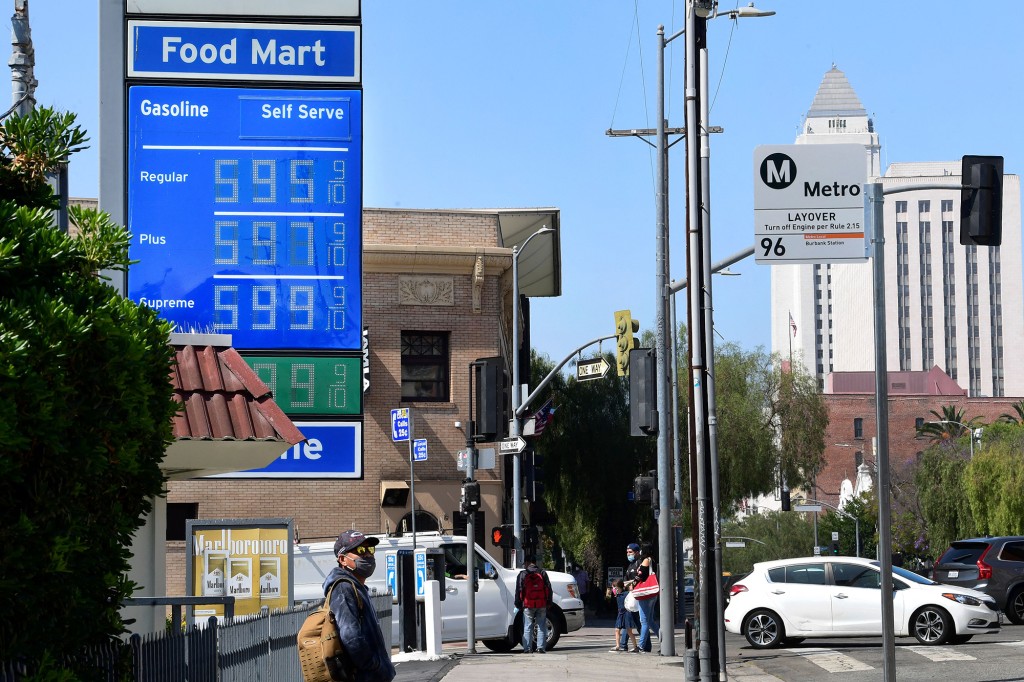Since the U.S. economic reopening began, gas prices rapidly hit a 7-year national average high of $3.24 a gallon. Consumers are feeling pain at the pump and wondering if this is the fruit of President Joe Biden’s energy policies. This oil and gas sticker shock threatens to strengthen the country’s biggest inflation scare in over 12 years, but are these simply supply and demand market forces at play and what tools does the U.S. president have to alleviate this? Do solutions that have been outlined clash with U.S. climate diplomacy initiatives?
Crude Oil Prices and Market Forces
Voters historically blame high gas prices on whoever is the current president, but short-term retail gas prices are not affected by long-term presidential energy policies, rather by crude oil prices that move by the very forces of supply and demand. As with other commodities, when supply exceeds demand, prices fall, and the inverse is true.
These two forces are affected by production costs, and supply and demand shocks like — natural disaster, geopolitical instability like war, and any unexpected event that constrains output or disrupts the supply chain. A positive supply shock increases output which makes prices fall, and the inverse is true as well.
In addition to supply and demand shocks, decisions about supply output are made by producers like the Organization of Petroleum Exporting Countries (OPEC), independent petro-states like Russia, and private oil-producing firms like ExxonMobil. OPEC controls almost 80% of the world’s supply of oil reserves. This consortium sets production levels to meet global demand which in turn influences the price of oil and gas.
The U.S. president does not control OPEC and can not set prices. Supply shortages and rising post-economic reopening gas demand caused the rise in gas prices.
Effects of Biden’s Energy Policies
The average retail gas price is now $1.02/gallon higher than a year ago, and higher than any time since 2014. Over a third of U.S. energy consumption in 2020 was supplied by natural gas. Oil and gas prices began to rise in May 2020 — tripling between then and the last week of December 2020. This is just the natural increase in demand for gas as the economy began opening back up from the pandemic shutdowns.
The entire world experienced this bounceback in oil and gas prices, and even other natural resources like lumber, metals, cotton, and sugar skyrocketed. Gas prices rose 280% in Europe this year and led to a 100%-plus surge in the U.S. due to factors like low storage levels, carbon prices, and reduced Russian supplies.
Presidents historically can only take very few actions — release oil from the Strategic Petroleum Reserve, increase gas taxes, or engage in Middle East conflict. Biden has done none of this, yet people point to his long-term energy policies that do not affect current supply, as proof of his culpability in the crisis.
Detractors often point to Biden’s cancelation of the treaty-violating Keystone XL pipeline, and suspension of new oil and gas permits for federal land and water. However, these actions drive up gasoline prices in years time, not mere months. These measures could only restrict oil supplies years in the future. Companies even have years of permits stockpiled in preparation for moves like this.
The oil market only directly reacts to moves by OPEC that quickly impact present supply and gas prices are directly correlated to the price per barrel of WTI crude oil.
What Biden Can Do
What can Biden really do to bring gas prices down? The U.S. planned to get OPEC and its allies to unleash spigots which hasn’t succeeded yet. OPEC+ announced it would only gradually add supply to the market instead of following the White House’s calls to ramp up production. This sent crude prices above $79 a barrel for the first time since November 2014.
Tapping the Emergency Oil Stockpile
Energy Secretary Granholm said Biden is considering releasing barrels from the Strategic Petroleum Reserve (the nation’s emergency stockpile of crude). Oil prices tumbled below $75 a barrel following these comments about the SPR which the administration used last month after Hurricane Ida. After clarifying there was no immediate plan for this, crude rose back near $79. However, tapping into the SPR could be too inconsequential of a move. Goldman Sachs believes releasing up to 60 million barrels of oil from the SPR would only be of “modest help,” cutting their year-end forecast for $90 Brent crude by just $3.
Oil Exports
Granholm expanded, adding that they have not ruled out banning oil exports, but the Energy Department walked back on it saying there’s no plan for that. A ban would likely only make Brent prices rise due to weaker supply.
Therefore, the White House must persuade OPEC+ to return production that was diminished during the pandemic
Pushing OPEC to produce more fossil fuels while huddling with leaders in Glasgow at COP26 summit just signals the start of a tricky energy transition towards sustainability.
Overall though, higher gas prices raise the risk of stagflation – high inflation, low growth. Goldman Sachs predicts higher oil demand, with a $5 per barrel upside risk to its fourth-quarter 2021 Brent price forecast of $80 a barrel. Brent is trading at about $74 currently .




Leave a Reply